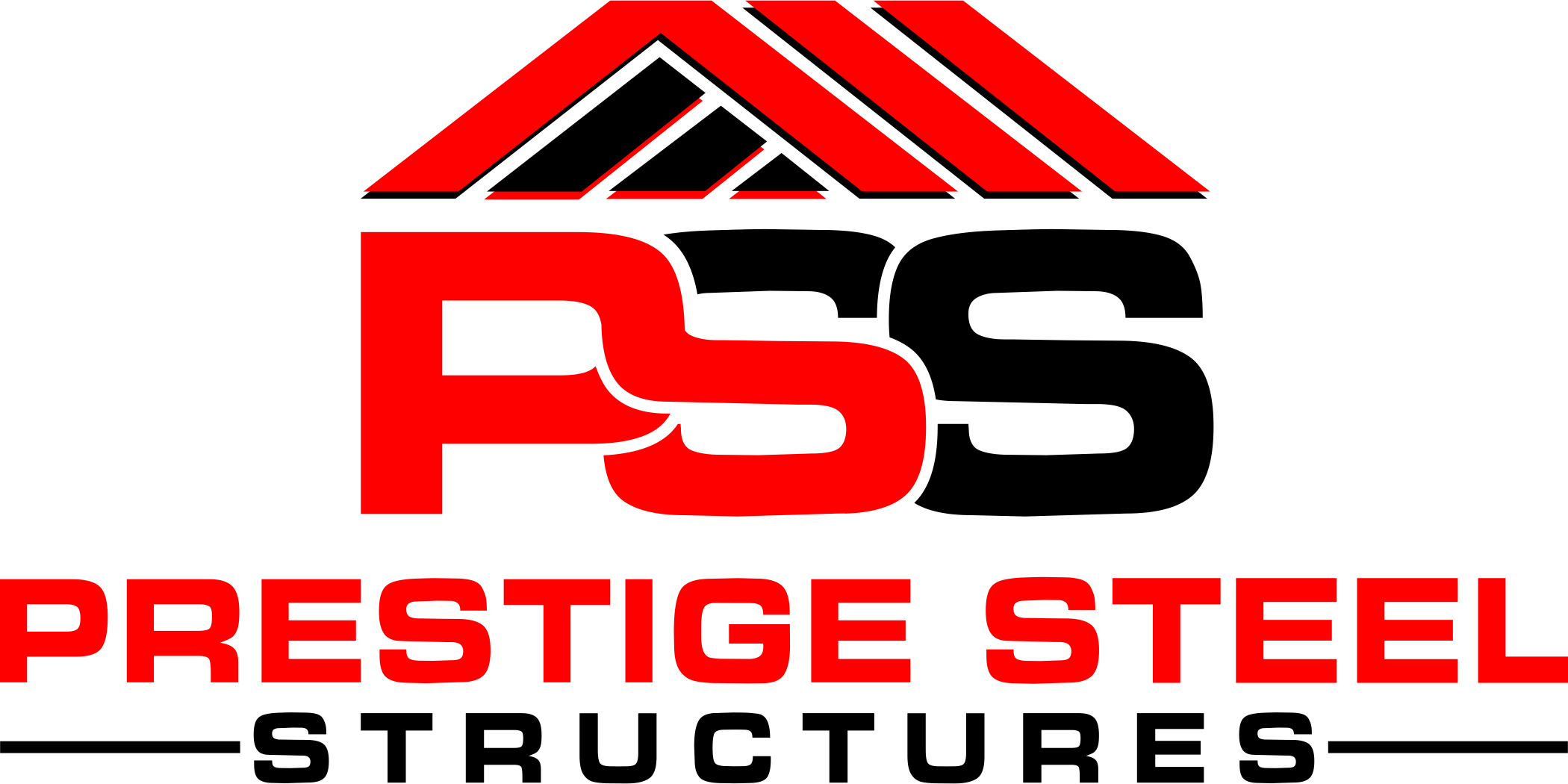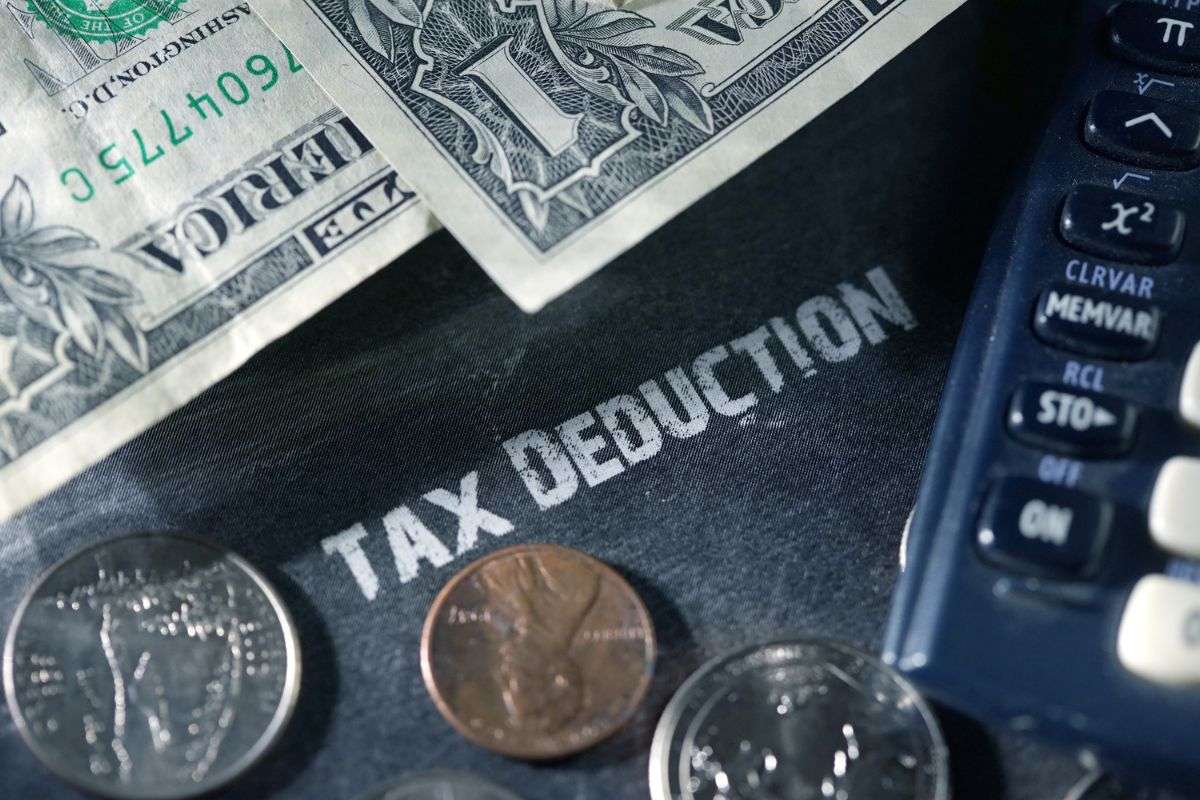Farmers and ranchers wonder if their metal barn qualifies for tax deductions due to high construction and maintenance costs. Picture working long hours in a durable, weather-resistant metal barn, only to realize later that you missed out on potential tax savings.
Fortunately, metal buildings, including metal barns, can qualify for tax deductions, but you must follow specific IRS regulations. We’ve broken down these guidelines to ensure you maximize your tax benefits without confusion. However, not all metal barns are eligible—those used for personal storage or hobbies typically don’t qualify. Below, we’ll dive into the requirements that make a metal barn eligible for tax deductions and depreciation benefits.
We’ve received numerous questions from farmers asking, “Can a metal barn be a tax write-off?” The simple answer is yes, but there are specific IRS rules that determine eligibility. Over the next few articles, we’ll continue helping farmers and ranchers optimize their tax deductions before year-end. If you’re considering adding a metal barn to your property, our experts at ROI Metal Buildings will guide you through every step of the process.

Can a Metal Barn Qualify for a Tax Write-Off?
Yes, a metal barn can qualify for a tax write-off if it meets specific IRS conditions. The primary requirement is that the barn must be used mainly for business purposes, such as farming or agricultural operations. If the structure supports income-generating activities—like housing livestock, storing feed, or sheltering farm equipment—it may be eligible for deductions.
To qualify, the barn must be owned by the taxpayer and used at least 50% of the time for business. If the structure serves both personal and business purposes, only the business-use percentage is deductible. The IRS bases deductions on the proportion of the barn’s use dedicated to income-generating activities. Maintaining detailed records of how the barn is used is essential for compliance.
Temporary or inherited structures may not qualify, as the IRS enforces strict eligibility guidelines emphasizing active use in a farming business. Proper documentation and proof of business activity are required to support any deduction claim.
The type of deduction available depends on factors like construction cost and depreciation. Under Section 179 of the IRS tax code, farmers can deduct certain costs related to new barn construction. Instead of deducting the full cost in one year, barns typically depreciate over 20 years.
A major benefit comes from the Tax Cuts and Jobs Act, which introduced first-year bonus depreciation. This allows agricultural businesses to deduct a large portion of construction costs in the first year, provided the barn was completed before January 1, 2023. While the deduction rate decreases over time—80% in 2023 and continuing downward—it still offers significant tax savings.
To maximize deductions, farmers and business owners must follow IRS rules and maintain accurate records. Consulting a tax professional ensures compliance and helps businesses take full advantage of available tax benefits.
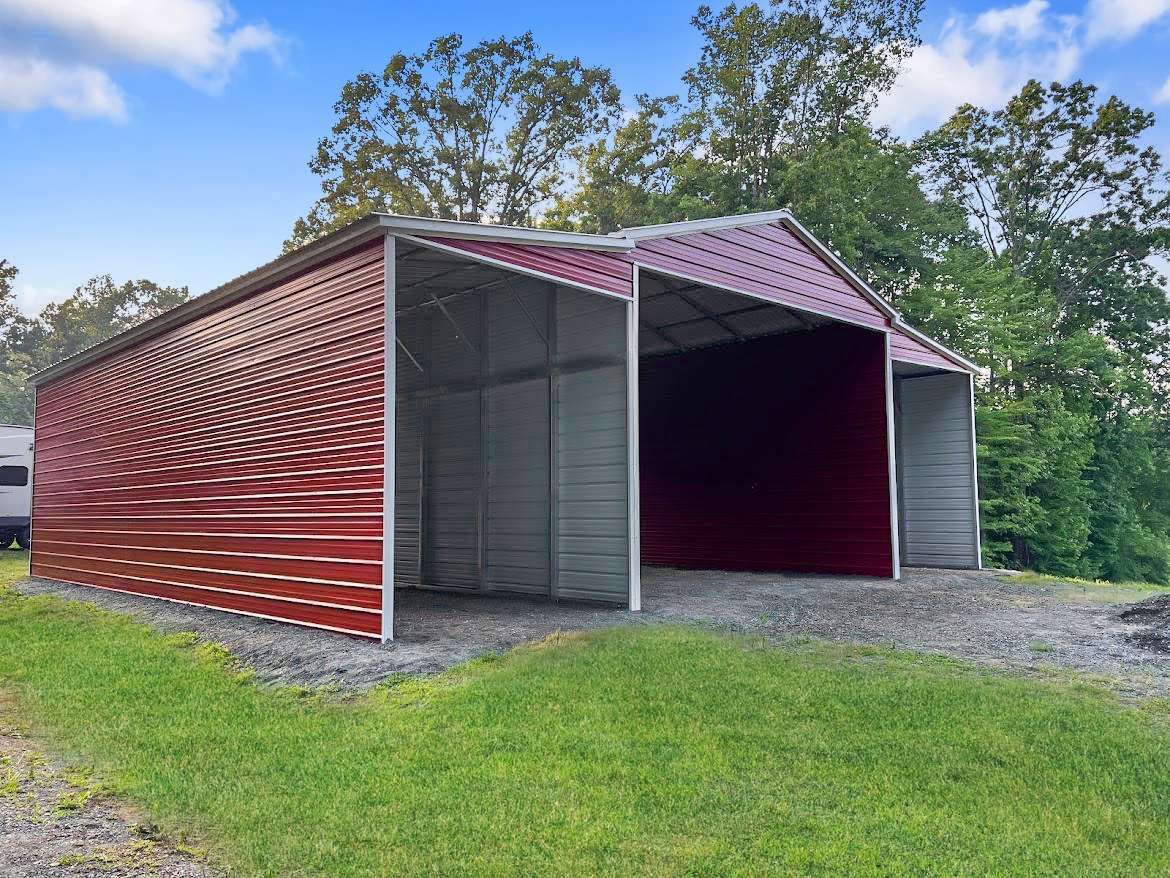
Maximizing Tax Deductions for Your Metal Barn
Maximizing tax deductions for your metal barn can significantly reduce costs and improve your farm’s financial health. However, the IRS enforces strict guidelines that determine which barns qualify for deductions and how expenses should be categorized. Understanding these rules is crucial to ensuring compliance while taking full advantage of available tax benefits.
This section explores key IRS criteria for agricultural tax deductions, including what qualifies as a farming business, how to document barn usage, and which expenses are deductible. You’ll also learn about depreciation strategies, bonus depreciation opportunities, and how to structure deductions for long-term savings.
By keeping accurate records and applying the right tax strategies, farm owners can optimize their tax benefits while ensuring compliance with IRS regulations.
IRS Criteria for Agricultural Tax Deductions: What Metal Barn Owners Need to Know
The IRS has strict guidelines to determine what qualifies as a legitimate farming operation for tax deductions. These rules help ensure only active agricultural businesses benefit from tax breaks. Understanding these criteria is essential if you want to maximize deductions for your metal barn.
What Defines a Farming Business?
The IRS defines a farming business in Publication 225 as an operation that involves cultivating crops, raising livestock, or managing dairy production. However, casual or occasional farming does not qualify. Your farming activities must be consistent and carried out with a clear intent to generate profit.
For example, if you grow crops solely for personal use, it doesn’t count as a business. Similarly, if you raise livestock as a hobby without selling products or services, your operation might not qualify. To be eligible for tax deductions, your activities must demonstrate business intent and profitability over time.
Now, let’s explore how your metal barn’s usage impacts its eligibility for tax deductions.
Does Your Metal Barn Qualify for Tax Deductions?
To qualify for tax deductions, your barn must serve a legitimate agricultural purpose under IRS guidelines. Here are some qualifying uses that can help you claim deductions:
- Housing livestock such as cattle, horses, or poultry.
- Storing feed, seeds, or farm equipment necessary for daily operations.
- Processing crops or animal products like milk, wool, or harvested produce.
If your metal barn serves one or more of these purposes, you may be eligible for deductions. However, using it for personal storage, as a garage, or for non-farming activities could disqualify you from tax benefits.
Maximizing Your Tax Deductions
For example, a metal barn used strictly for storing farm machinery or feed aligns with IRS requirements for deductions. Keeping detailed records of your barn’s use will help you provide proof if needed.
Understanding these tax rules ensures compliance while maximizing financial benefits for your farm. Next, we’ll explore deductible expenses and how to navigate the process effectively.
Deductible Barn Expenses: What You Need to Track
Several expenses related to your metal barn may be tax-deductible. Keeping detailed records ensures you don’t miss out on valuable write-offs. Below are key deductible expenses:
1. Repairs and Maintenance
Regular upkeep of your metal barn is considered a business expense. If you repair storm damage or replace worn-out roofing, the costs may be fully deductible.
Example: Spending $2,000 on roof repairs due to storm damage could qualify for a tax deduction.
2. Mortgage Interest and Property Taxes
If you financed your metal barn with a loan, the interest on that loan may be deductible. Additionally, property taxes related to the barn can also be written off.
Tip: Keep track of your loan statements and tax records to claim these deductions accurately.
3. Utilities and Operating Costs
Many farmers overlook operational expenses tied to their barns. If you use electricity, heating, or cooling for farm-related purposes, these costs may qualify.
Example: Utility costs for ventilation fans, heating systems, or lighting in a barn used for livestock can be deducted.
4. Farm Supplies and Equipment Storage
If your barn is used to store feed, equipment, or livestock care supplies, these expenses can also be deducted. Cleaning products and pest control supplies needed for barn maintenance may qualify.
Example: Buying cleaning supplies for a livestock barn meets the IRS criteria for operational deductions.
Stay Organized for Maximum Tax Savings
Proper documentation is essential when claiming deductions. Keep invoices, receipts, and loan statements to back up your claims. This not only simplifies tax filing but also protects you in case of an audit.
Understanding which expenses qualify allows you to reinvest more funds into your farm. Next, we’ll explore depreciation strategies to maximize long-term tax benefits for your metal barn.
Depreciation Strategies for Your Metal Barn
Managing farm finances efficiently includes understanding depreciation, a valuable tax strategy that allows barn owners to spread deductions over time. Instead of deducting the full cost in one year, depreciation distributes expenses across the barn’s useful life. This method aligns costs with farm income, ensuring financial stability. Proper planning ensures you maximize tax savings while maintaining steady cash flow.
Depreciation Periods: How Long Can You Deduct a Barn?
The IRS sets different depreciation schedules depending on how a barn is used. Understanding these timelines helps determine your annual deductions.
- Single-purpose barns (used exclusively for livestock or specific farm activities) depreciate over 10 years.
- General-use barns (used for storing grain, equipment, or multiple purposes) depreciate over 20 years.
For example, a $100,000 investment in a general-use metal barn results in a $5,000 deduction per year for 20 years. If the barn is categorized as single-use, the deduction doubles to $10,000 per year for 10 years. These timelines impact financial planning, so it’s important to classify the barn correctly for optimal tax benefits.
First-Year Bonus Depreciation: Fast-Tracking Deductions
The Tax Cuts and Jobs Act (TCJA) introduced first-year bonus depreciation, allowing farmers to deduct a large portion of barn costs immediately. This can provide significant financial relief and improve cash flow.
Current Bonus Depreciation Rules:
- 100% deduction applies to barns completed before January 1, 2023.
- 80% deduction applies for barns placed in service in 2024, decreasing further in later years.
For example, if you constructed a $100,000 metal barn in 2023, you could deduct the entire amount in the first year. However, if the barn is placed in service in 2024, only $80,000 is deductible upfront, with the remaining $20,000 depreciated over time. This reduction highlights the urgency of utilizing bonus depreciation before further declines.
Used Metal Barns May Also Qualify
Many farm owners assume bonus depreciation only applies to new barns, but used barns may also qualify under IRS regulations. If you purchase a pre-owned metal barn, it could be eligible for depreciation if it meets the IRS’s criteria for “qualified property.”
Additionally, improvements made to a used barn—such as installing new roofing, insulation, or ventilation systems—may also be deductible as separate capital expenses. Keeping detailed records of upgrades ensures eligibility for depreciation and other tax benefits.
Additional Depreciation Strategies to Maximize Savings
Beyond standard depreciation, certain tax provisions help accelerate deductions. These include:
- Section 179 Expensing: Allows farmers to deduct the full cost of a barn up to a specific limit rather than depreciating it over time.
- Modified Accelerated Cost Recovery System (MACRS): A depreciation method that allows faster deductions in the early years of a barn’s life.
Farmers should evaluate which method best suits their financial needs. A tax professional can help navigate these options to ensure maximum savings.
Why Strategic Tax Planning Matters
Understanding depreciation and tax incentives reduces tax liability, improves cash flow, and allows reinvestment in farm operations. Since bonus depreciation phases out over time, acting quickly ensures higher tax deductions before IRS regulations change.
Additionally, knowing how depreciation affects future sales and asset valuations can influence long-term financial decisions. If a barn is sold after full depreciation, capital gains taxes may apply, making it crucial to plan for tax implications.
Take Action: Maximize Your Metal Barn Tax Benefits
- Review your barn’s classification to determine the correct depreciation period.
- Track all construction and improvement costs to support tax claims.
- Consult a tax expert to explore deductions before depreciation rates decrease further.
By leveraging depreciation strategically, you can keep more money in your farming operation, invest in future growth, and ensure long-term financial sustainability.
As we continue, let’s explore how equipment and utility deductions further optimize tax benefits for farm owners.
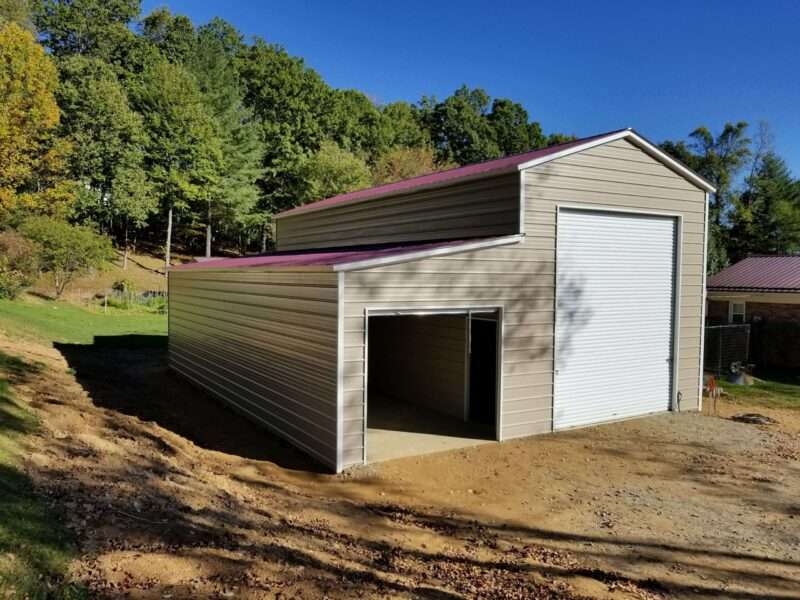
Maximizing Tax Deductions for Metal Barn Operations: Equipment and Utility Costs
Operating a farm requires a significant investment in equipment and utilities, especially when managing a metal barn. The good news is that many of these costs qualify for tax deductions, reducing financial strain while keeping your farm efficient. Understanding how to claim deductions for equipment and utilities ensures you get the most out of your expenses.
Deducting Farm Equipment Costs
Farm equipment plays a crucial role in daily operations, and many purchases qualify as deductible expenses. Here’s how:
1. Qualifying Equipment for Deductions
Any machinery or tool that depreciates over time and is used for farming activities may qualify for deductions. This includes:
- Tractors and feed mixers used to transport and process livestock feed.
- Handheld tools such as sprayers or chainsaws for farm maintenance.
- Technology investments, including computers or software for managing farm operations.
Example: Purchasing a $50,000 tractor specifically for feeding livestock may allow you to deduct the full amount.
2. Strategic Equipment Purchases
If you’re buying new equipment, timing matters. Purchases made near the fiscal year-end may qualify for first-year bonus depreciation, allowing you to write off the entire cost in one tax year instead of spreading it over several years.
Tip: Plan major purchases at the end of the year to maximize deductions while improving cash flow.
3. Keep Accurate Records
To claim deductions, you must keep detailed records, including purchase invoices, financing agreements, and usage logs. Proper documentation helps during tax filing and protects you in case of an audit.
Claiming Utility Deductions for Your Metal Barn
Utility costs directly linked to your barn’s farming activities can also be deducted. These include:
- Electricity and lighting used for livestock housing or equipment operation.
- Water usage for cleaning stalls, irrigating crops, or caring for animals.
- Heating and cooling expenses for maintaining livestock-friendly temperatures.
Allocating Utility Expenses
If your barn shares utilities with personal spaces—like a riding arena or workshop—you’ll need to divide expenses properly. Only the portion directly used for farming qualifies for deductions.
Tip: Keep a log of usage percentages and store monthly utility bills for accurate tax claims.
Stay Organized for Maximum Tax Benefits
Proper documentation ensures you capture every deductible expense. Track invoices, monthly bills, and receipts to streamline tax filing and maximize savings. By staying organized, you can reduce taxable income and reinvest more into your farm.
Next, we’ll explore how to navigate financial paperwork and keep your farm’s records audit-ready.

Essential Tax Forms and Record-Keeping for Metal Barn Owners
Accurate record-keeping is more than just helpful—it’s essential when claiming tax deductions for your metal barn and farm operations. Proper documentation protects you from IRS scrutiny while ensuring you maximize deductions. Think of your records as a safety net that supports financial stability and compliance.
Key Tax Forms for Barn-Related Deductions
To correctly file taxes and claim deductions for your metal barn, you must use the appropriate IRS forms. Proper documentation ensures compliance with tax laws while maximizing savings. Below are the essential forms that farm owners should be familiar with:
1. Form 4562 – Depreciation and Amortization
- Used to report depreciation on large business assets, including metal barns, farm equipment, and machinery.
- Allows taxpayers to spread out the cost of the barn over several years, reducing taxable income annually.
- Enables farm owners to claim Section 179 expensing or bonus depreciation, which can provide an immediate deduction for qualifying expenses.
2. Schedule F (Form 1040) – Profit or Loss from Farming
- The primary form for reporting farm-related income and expenses, including costs associated with a metal barn.
- Must be completed accurately to reflect farming business earnings and deductible expenses, such as repairs, utilities, and maintenance.
- Helps determine whether your farm is operating at a profit or loss, which can affect eligibility for certain deductions and tax credits.
3. Form 8824 – Like-Kind Exchanges
- Used when exchanging one farm property for another without involving cash (also known as a 1031 exchange).
- Helps defer capital gains taxes when trading an old barn, farmland, or other farm assets for a new one of equal or greater value.
- Ensures that tax liabilities are postponed until the exchanged property is eventually sold for cash.
Properly completing these forms is crucial for claiming deductions and optimizing tax savings. Keeping organized records and consulting with a tax professional can help ensure accuracy and compliance with IRS regulations.
Best Record-Keeping Practices for Maximum Deductions
Keeping organized and accurate records is essential for maximizing tax deductions and ensuring compliance with IRS regulations. Proper documentation not only simplifies tax filing but also protects you in case of an audit. Here are some best practices to keep your records in order:
1. Keep All Receipts and Invoices
- Maintain receipts for all barn-related expenses, including construction, repairs, utilities, insurance, and equipment purchases.
- Store both digital and physical copies to ensure you have backup records.
- These documents serve as proof of expenses and are crucial if the IRS requests verification.
2. Use Digital Accounting Tools
- Software like QuickBooks, FreshBooks, or Microsoft Excel helps track farm income and expenses efficiently.
- Digital records minimize paperwork, reduce errors, and make it easier to categorize and retrieve data.
- Automating expense tracking ensures you don’t overlook deductible costs and simplifies year-end tax filing.
3. Categorize Expenses for Easy Access
- Organize records into clear sections, such as:
- Maintenance & Repairs: Roof repairs, structural improvements, and equipment servicing.
- Farm Supplies & Utilities: Feed, water, electricity, and fuel expenses.
- Property Costs & Taxes: Mortgage interest, lease payments, and property taxes.
- Labeling and categorizing expenses correctly makes tax preparation more manageable and reduces the chances of missing deductions.
By implementing these record-keeping strategies, you can ensure accurate financial tracking, maximize tax deductions, and stay compliant with IRS requirements. Keeping well-documented records also allows you to make informed financial decisions for your farm and its assets.
Why Proactive Record-Keeping Matters
Having everything organized before tax season saves you time and stress. If the IRS ever audits your farm, a well-documented system ensures you have proof of every deduction.
With the right forms and records, you can maximize tax benefits while keeping your farming operation financially strong. Next, we’ll dive into depreciation strategies to further reduce taxable income.
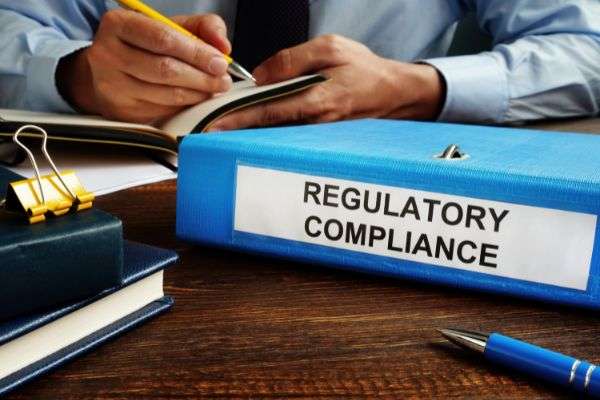
Tax Deductions and IRS Guidelines for Metal Barns: Eligibility, Compliance, and Maximization Strategies
Metal barns can serve a variety of purposes, from agricultural storage to event rentals and business operations. If your barn is used for income-generating activities, you may be eligible for valuable tax deductions. However, navigating IRS regulations can be complex, requiring careful documentation and compliance with specific guidelines.
This section explores the key tax deduction rules for metal barns, including eligibility requirements, business vs. personal use considerations, and potential IRS audit risks. Understanding these factors can help you maximize deductions while ensuring compliance with tax laws. By maintaining proper records and consulting a tax professional, you can take full advantage of tax-saving opportunities while avoiding common pitfalls.
Tax-Deductible Expenses for Maintaining or Improving a Metal Barn
If your metal barn serves a business purpose, you may be eligible for tax deductions on related expenses. Common deductible costs include repairs, utilities, insurance, and depreciation. These expenses qualify as business deductions under IRS guidelines, provided you can prove the barn’s business use with proper records.
To maximize deductions, maintain detailed financial documentation of all expenses. If you rent the barn for events, use it for farming, or operate a business inside, you may qualify for additional tax benefits. Consulting a tax professional ensures you claim all eligible deductions while staying compliant with IRS regulations.
Potential IRS Audits and Pitfalls When Claiming a Metal Barn as a Tax Deduction
Claiming a metal barn as a tax deduction can invite IRS scrutiny, especially if its business use is unclear. The IRS requires proof that the barn supports income-generating activities. Failing to document business use or misclassifying expenses may lead to audits or denied deductions.
Only expenses directly tied to business operations qualify for deductions under IRS rules. Keep detailed records of how the barn is used, including receipts and logs. The IRS audits about 1 in 160 tax returns, so having clear evidence can protect your claim. Consult a tax professional to avoid costly mistakes.
Tax Deduction Rules for Metal Barns: Business vs. Personal Use
Tax rules differ for metal barns based on their use. If the barn supports a business, like farming or event rentals, you can deduct maintenance, depreciation, and other related costs under IRS guidelines.
However, if the barn is for personal use, such as hobby farming or storing personal items, expenses typically do not qualify for deductions. The IRS only allows deductions for ordinary and necessary business expenses. To support your claim, keep detailed records proving the barn’s role in income-generating activities. A tax professional can help ensure compliance and maximize deductions.
Requirements for a Metal Barn to Qualify as a Tax-Deductible Asset
To qualify as a tax-deductible asset, a metal barn must meet specific IRS requirements. It should be used primarily for business purposes, with at least 50% of its use dedicated to income-generating activities like farming or leasing.
The barn must also be considered a necessary business expense tied to your operations. To support your claim, keep detailed records, including receipts and usage logs. According to IRS data, over 40% of farmers claim depreciation on barns, proving their value as business assets. Consulting a tax professional can help ensure compliance and maximize deductions.
How Barn Size and Structure Affect Tax Write-Off Eligibility
The size and structures of metal barns impact its eligibility for tax write-offs. The IRS allows deductions if the barn is primarily used for business, such as livestock housing, crop storage, or rental space.
If the barn takes up a large portion of your property and is used exclusively for income-generating activities, you may claim maintenance and depreciation deductions based on its business use percentage. Proper classification can lead to significant tax savings. To maximize deductions, maintain detailed records proving the barn’s role in your business. Consulting a tax professional ensures compliance and maximized benefits.
Conclusion
Maximizing tax deductions for your metal barn requires strategic planning and adherence to IRS regulations. By ensuring that your barn is primarily used for business purposes, maintaining accurate records, and leveraging depreciation strategies, you can significantly reduce taxable income and improve financial stability. Deductions on maintenance, utilities, and equipment storage can further enhance your savings.
The IRS provides several tax-saving opportunities, including Section 179 expensing and bonus depreciation, which can help offset construction costs. However, failing to document expenses properly or misclassifying barn usage can lead to audits or denied deductions. Keeping organized financial records and consulting with a tax professional ensures compliance and prevents costly mistakes.
Taking proactive steps now can maximize your tax benefits while strengthening your farm’s financial future. Whether you’re constructing a new metal building structure or optimizing deductions on an existing barn, understanding tax rules is key to making informed, profitable decisions. Start planning today to secure long-term tax savings.
FAQs on Metal Barn Tax Deductions
Can I deduct the full cost of a metal barn in one year?
No, most metal barns must be depreciated over time, typically 10 or 20 years, unless qualifying for Section 179 or bonus depreciation.
What percentage of barn use must be for business to qualify for deductions?
At least 50% of the barn’s use must support income-generating activities to qualify for business-related tax deductions.
Are barn repair and maintenance costs tax-deductible?
Yes, regular repairs and maintenance, such as roof fixes or equipment servicing, are fully deductible business expenses.
Can I claim deductions on a barn used for personal and business purposes?
Yes, but only the percentage of the barn used for business qualifies for deductions under IRS guidelines.
What documents do I need to support my tax deduction claim?
Keep receipts, invoices, usage logs, and financial statements to prove business use and ensure IRS compliance.

